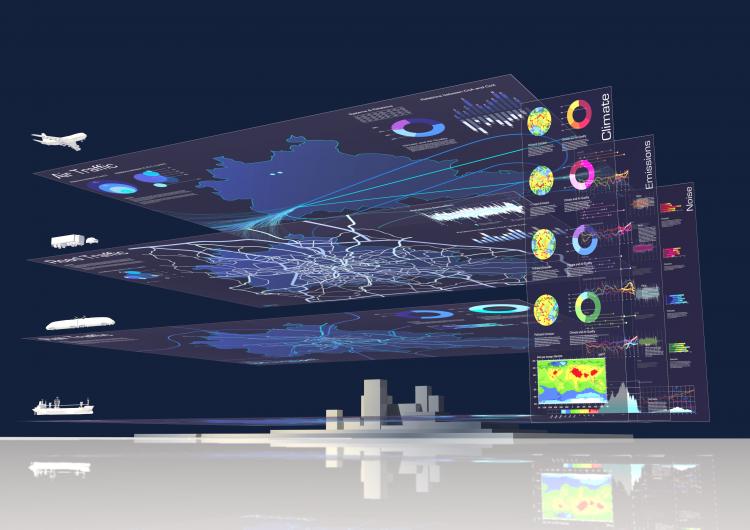Ensuring mobility while at the same time protecting people, resources and the environment is one of our greatest future challenges.
In the DLR research project Transport and the Environment (VEU, from Verkehrsentwicklung und Umwelt), twelve renowned scientific institutions have formed a unique research network. Their goal is to study the transport of the future and its effects on people and the environment, in particular through noise, greenhouse gas emissions and air pollution. The aim is to develop perspectives for building a more sustainable transport sector and enable mobility with less traffic impacts.
The researchers are constructing scenarios depicting the evolution of all transport modes until 2040. Of particular importance are the interactions between transport, build and natural environment. Some of the questions the researchers are posing are:
- In what way do societal and technological changes influence our future mobility behavior?
- Which measures are valid and effective in fostering a cross-linked, socially and environmentally sound, multi-modal transport system?
- How can supply of new mobility offerings alter our choice of mobility?
- Which changes can we expect driven by technological innovation in the personal mobility and mobility of goods?
- What are the impacts that may result from those anticipated changes, in particular for the economy, air quality and weather patterns and global climate change.
Forward-looking Scenarios and Models
The VEU-szenarios are developed in a collaborative process by all participating project partners. The multi-disciplinary expertise of the partners enables the inclusion of natural science, sociology and technology, of empirical data on trends and the multi-facetted methodological capacities. Empirical studies allow the analysis of potential developments in transport volume in all categories (from bicycle, car, bus and rail to air). The effects of new technologies, for example electric mobility and lightweight construction, are similarly included than those of new mobility concepts such as bike- and car-sharing and their potential impact on the economy and labor market.
The project uses a systematic approach for developing consistent VEU-scenarios. The resulting pictures of the mobility system in 2040 are subsequently filled with concrete measures and trends and are further processed to be analyzed in the VEU model-landscape. The VEU-model-landscape includes traffic models that are developed or enhanced by the project partners. They allow the quantification of future transport volumes by taking into account technological progress and socio-economic dynamics and trends. Models for processing emission inventories and atmospheric processes are developed to calculate the environmental effects. The VEU model-landscape ranges from microscopic models to global air quality and climate models.

The Project Objective: Roadmap for a Sustainable Mobility Future
Beyond their contribution to research, the project findings are to help policy makers in evaluating future transport developments and to better assess the effectiveness and efficiency of policy measures – with a particular view to increased sustainability in the transport sector.
